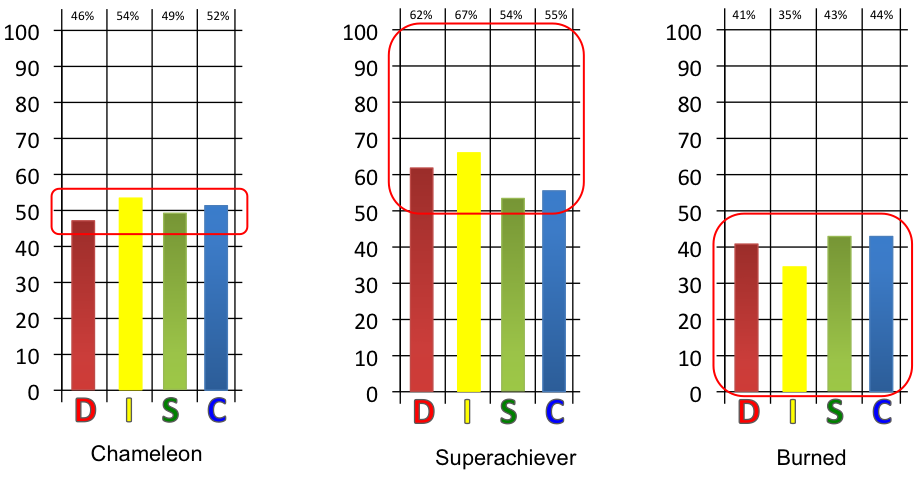As you should know if you are certified in DISC Methodology, there are 3 unusual profiles, also called transition profiles, each of these profiles has a special meaning that makes these profiles “transient”. The three unusual profiles are: Transition profile (or Chameleon); Satisfaction profile (or Superachiever), and; Profile of change, also called dissatisfaction (or burned).
In our reports it is easy to recognize when an unusual transition profile appears. You will see it in two places:
- In the DISC Map you will see that the letter that identifies the N (natural) or A (Adapted) profile appears inside a red square. This means that (in this case) the Adapted profile is unusual.
2. On the Profile Graphs page, you will see that below the description of the natural or adapted graph (in this example, the adapted one), a phrase appears naming the type of unusual profile in question, in this example, an unusual profile of Change, also called Dissatisfied (or “burned”) and you will see that effectively the bar graph indicates that it is a profile of change being all factors below the average line of 50%.
In this case, the report will anyway take the highest 2 factors to build the report, just for the evaluee to get a completed report, but you must know unusual profiles are transient and with time and/or help, the person must return to a “normal” profile, so, be carefully on how do yo “read” the report’s results, especially when the unusual profile happen in the Natural profile, as the “normal” profile can be quite different from this transitory one. The power of this report is TO KNOW the person is in transition and be able to help him or her at this time of his/her life.
If you want to get all the juice from the DISC methodology and you have not yet been certified as a DISC Analyst, we encourage you to do so, ask the Agent in charge of your account Or with us about next courses in your country.



